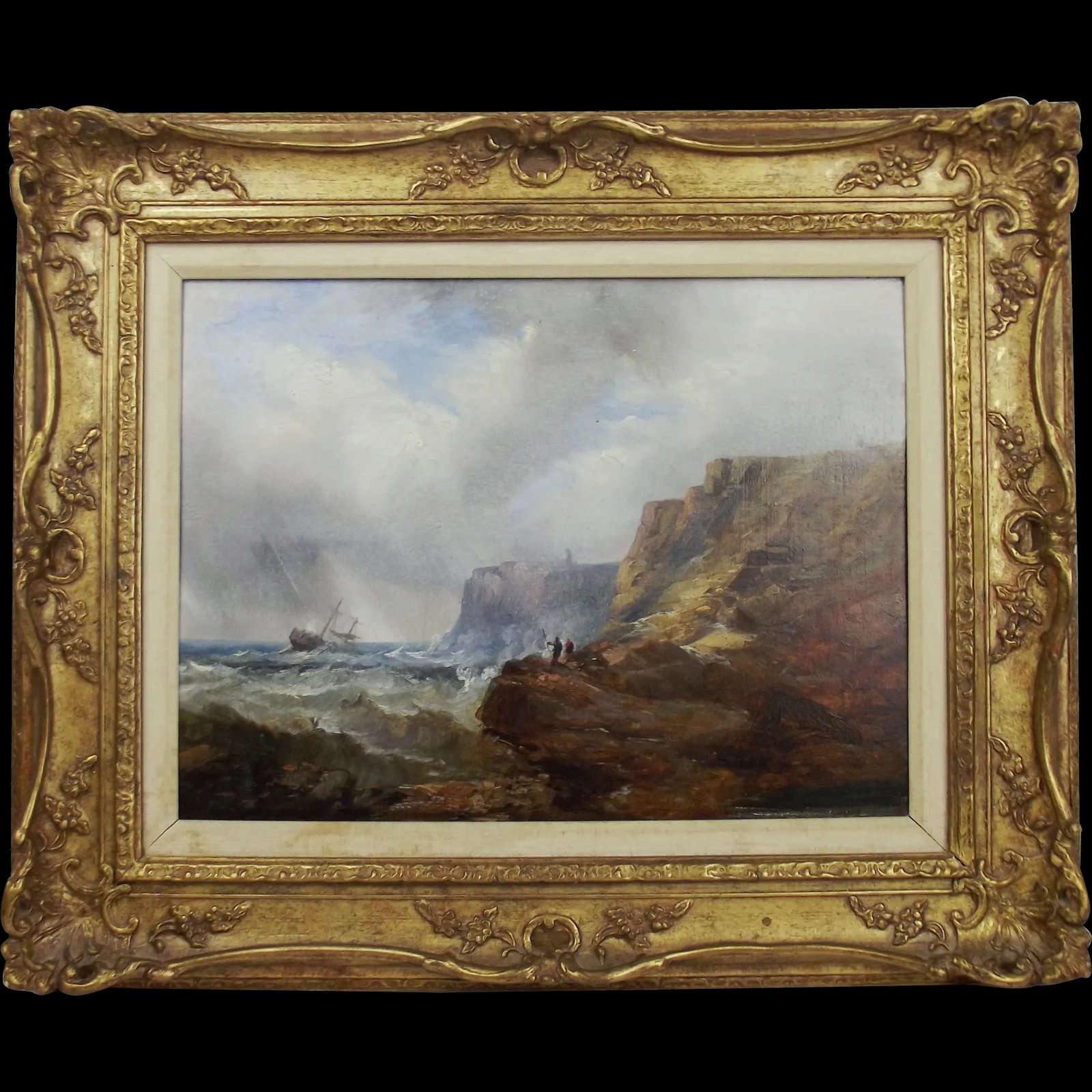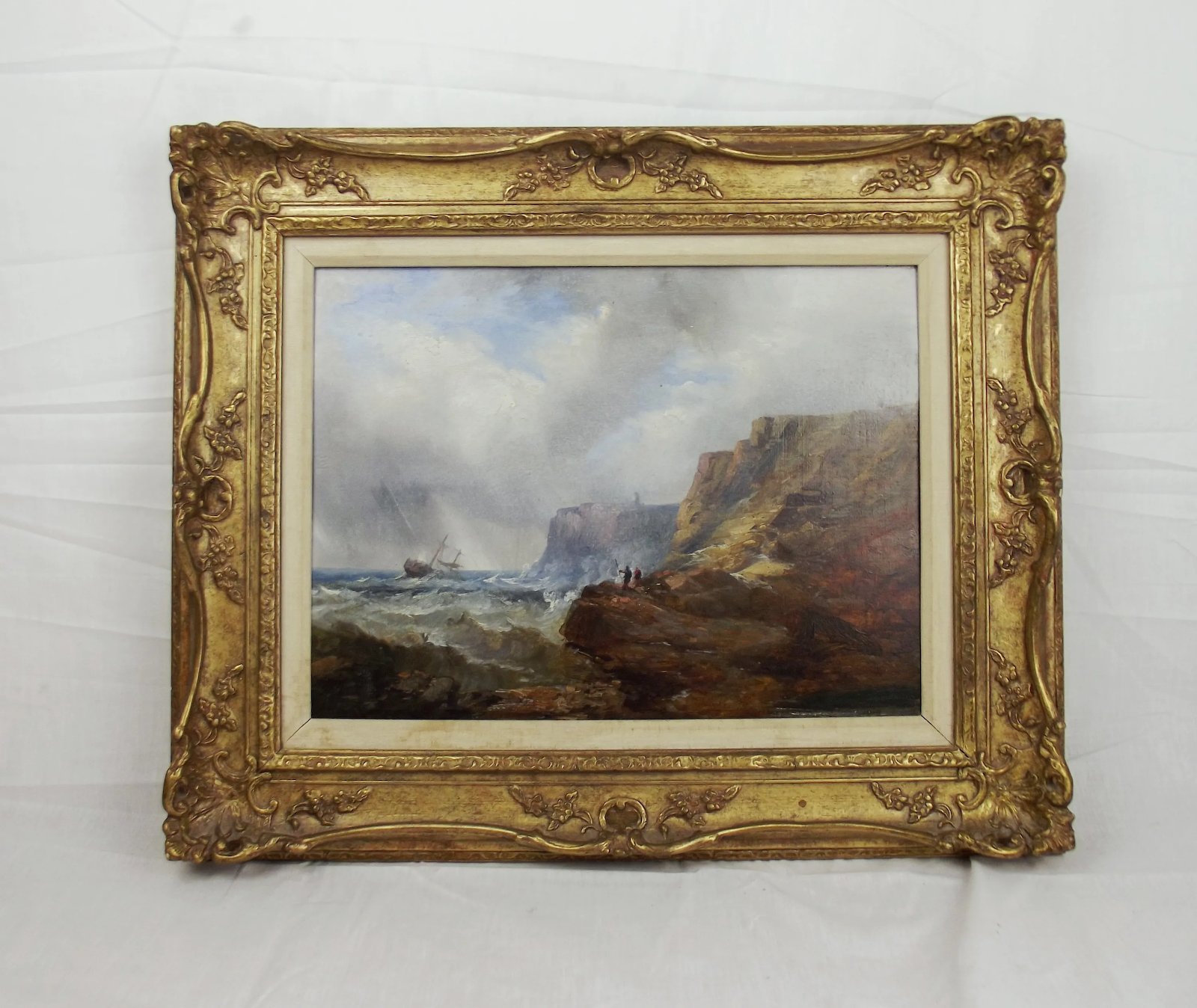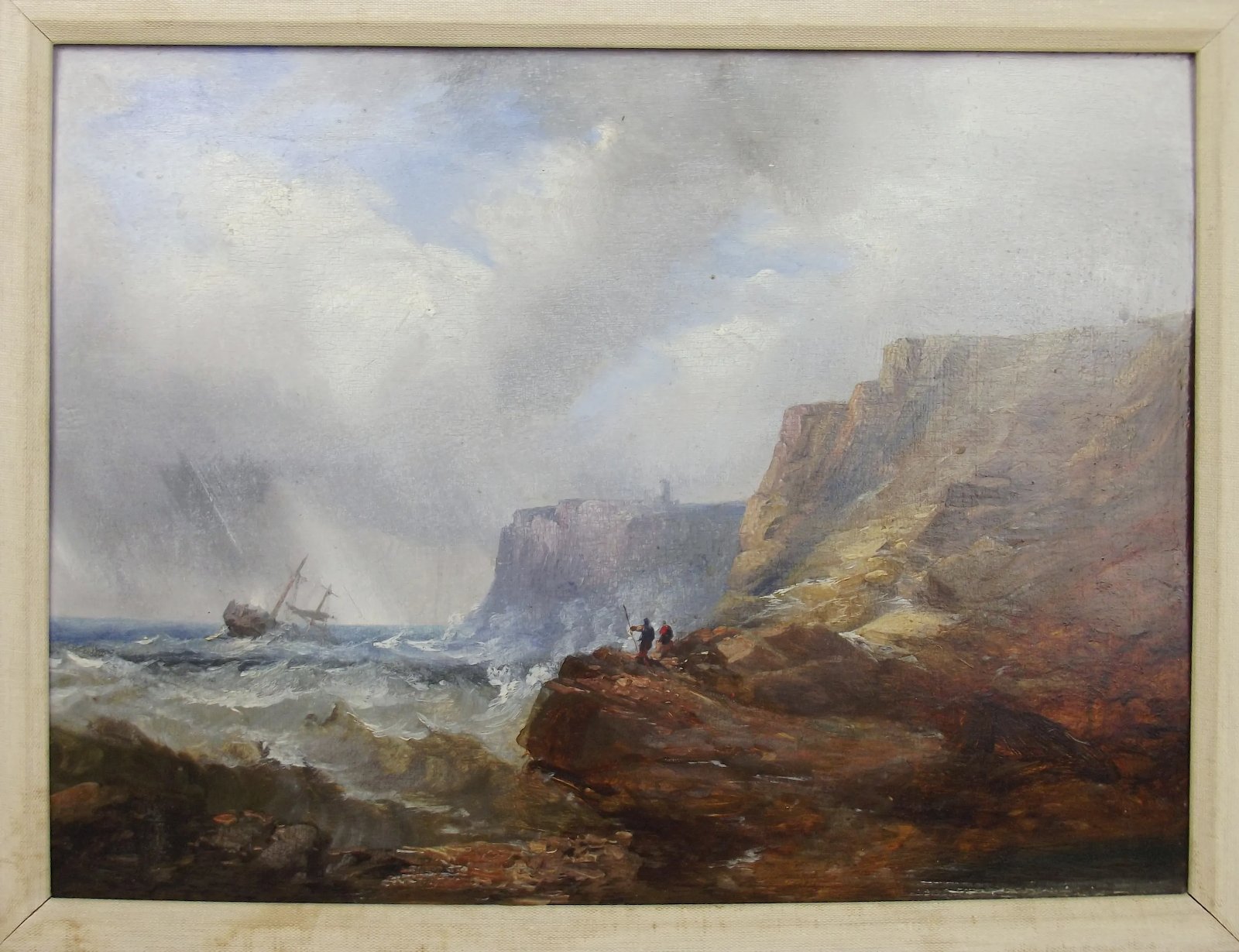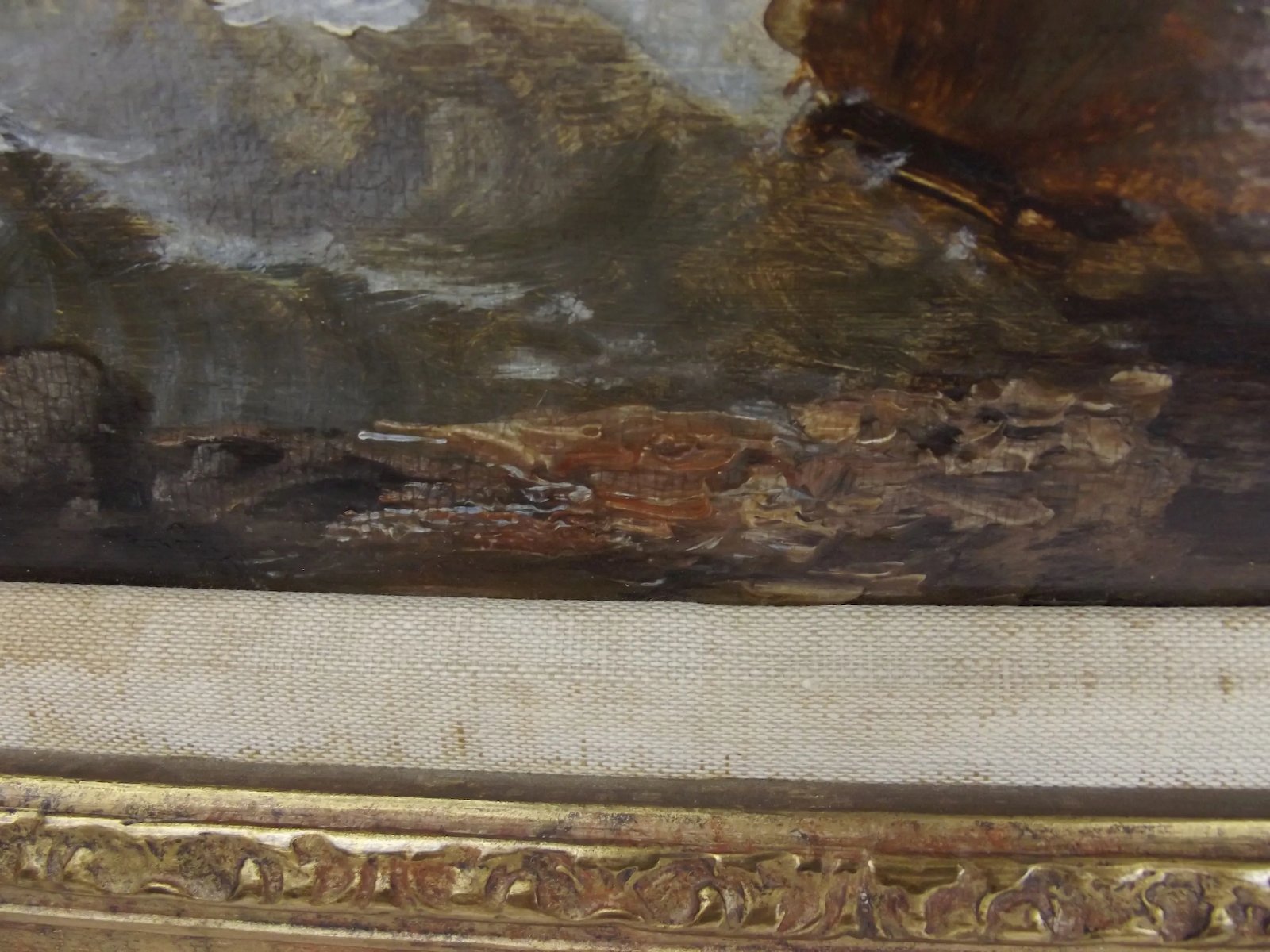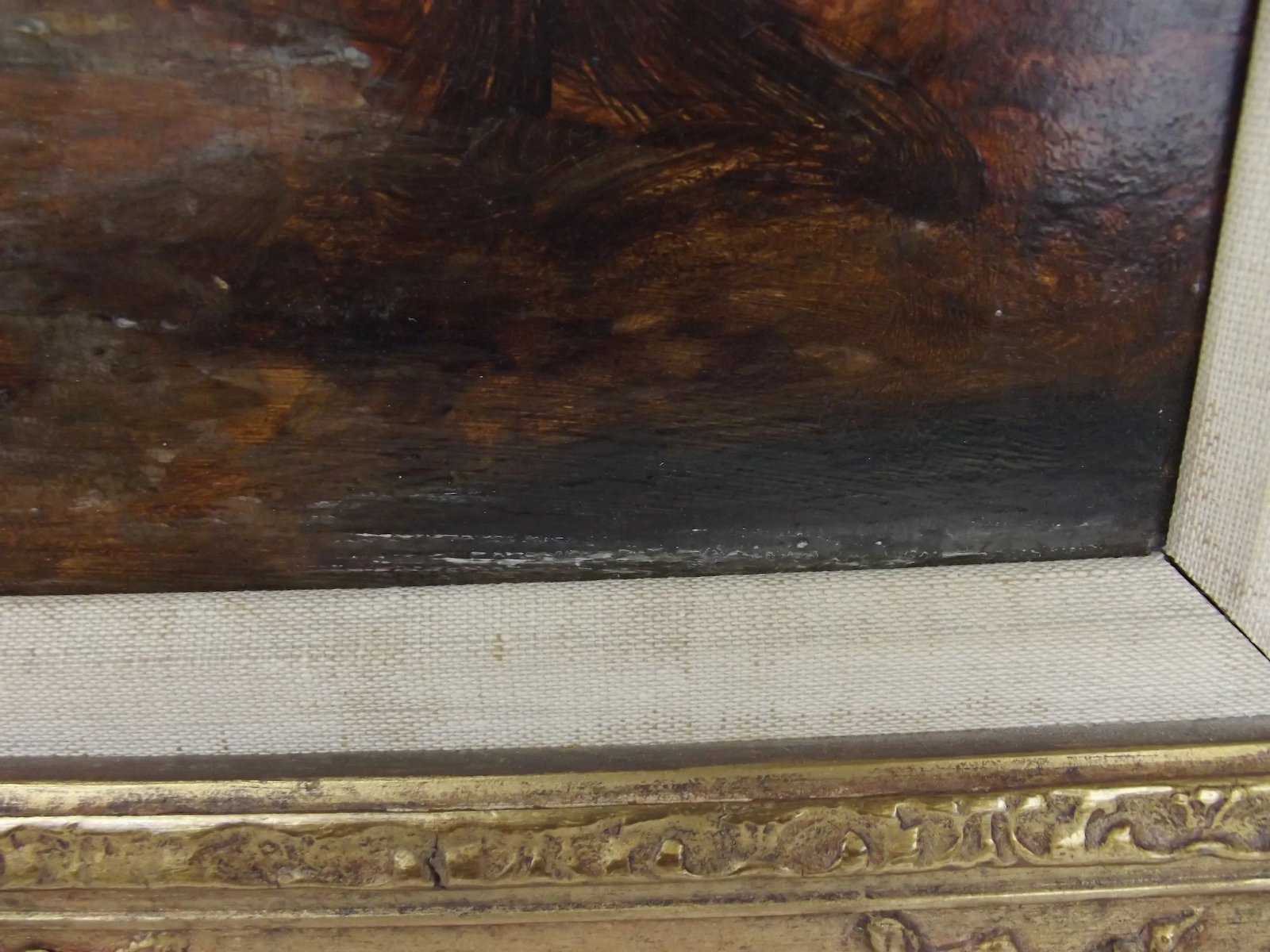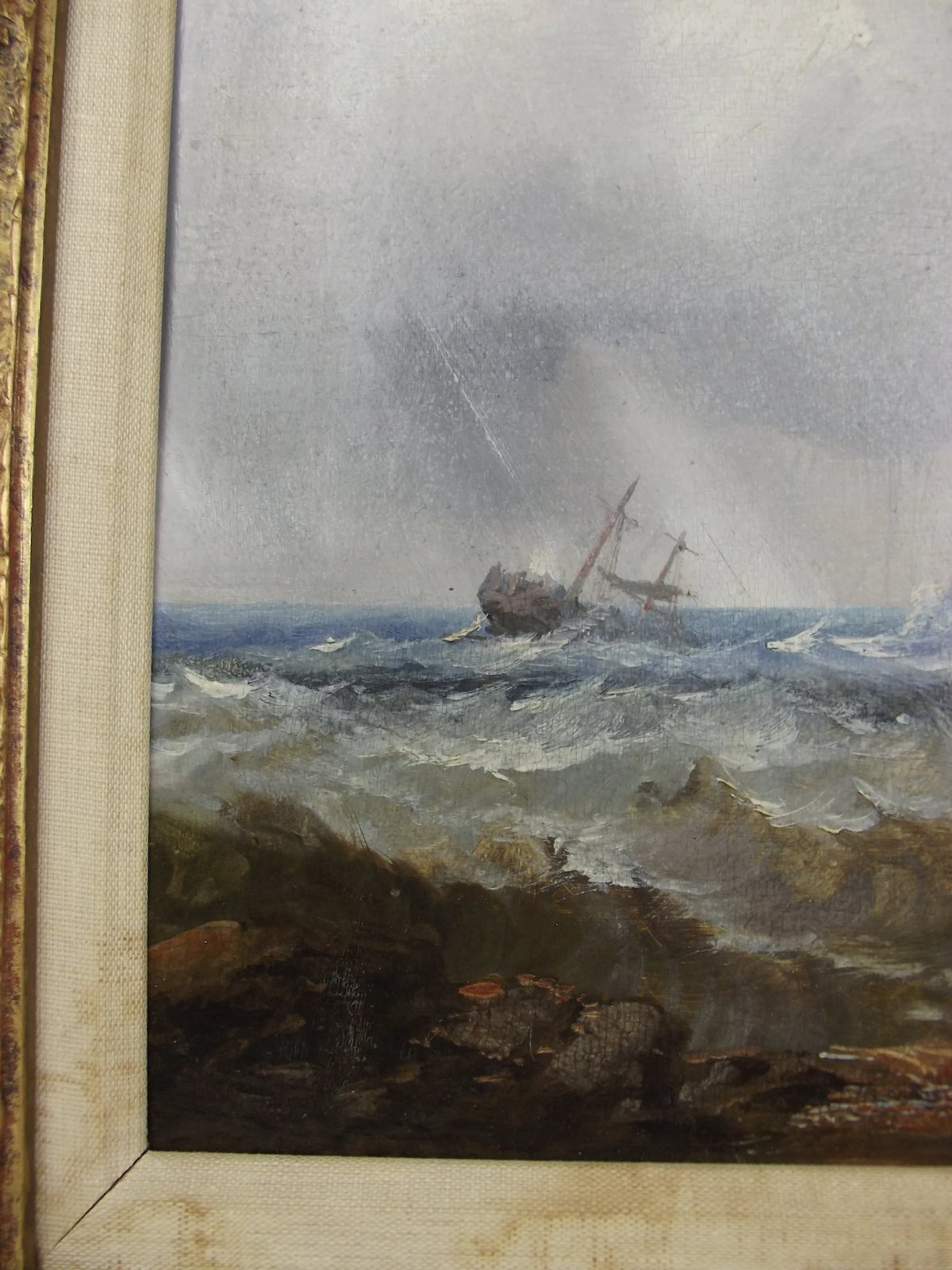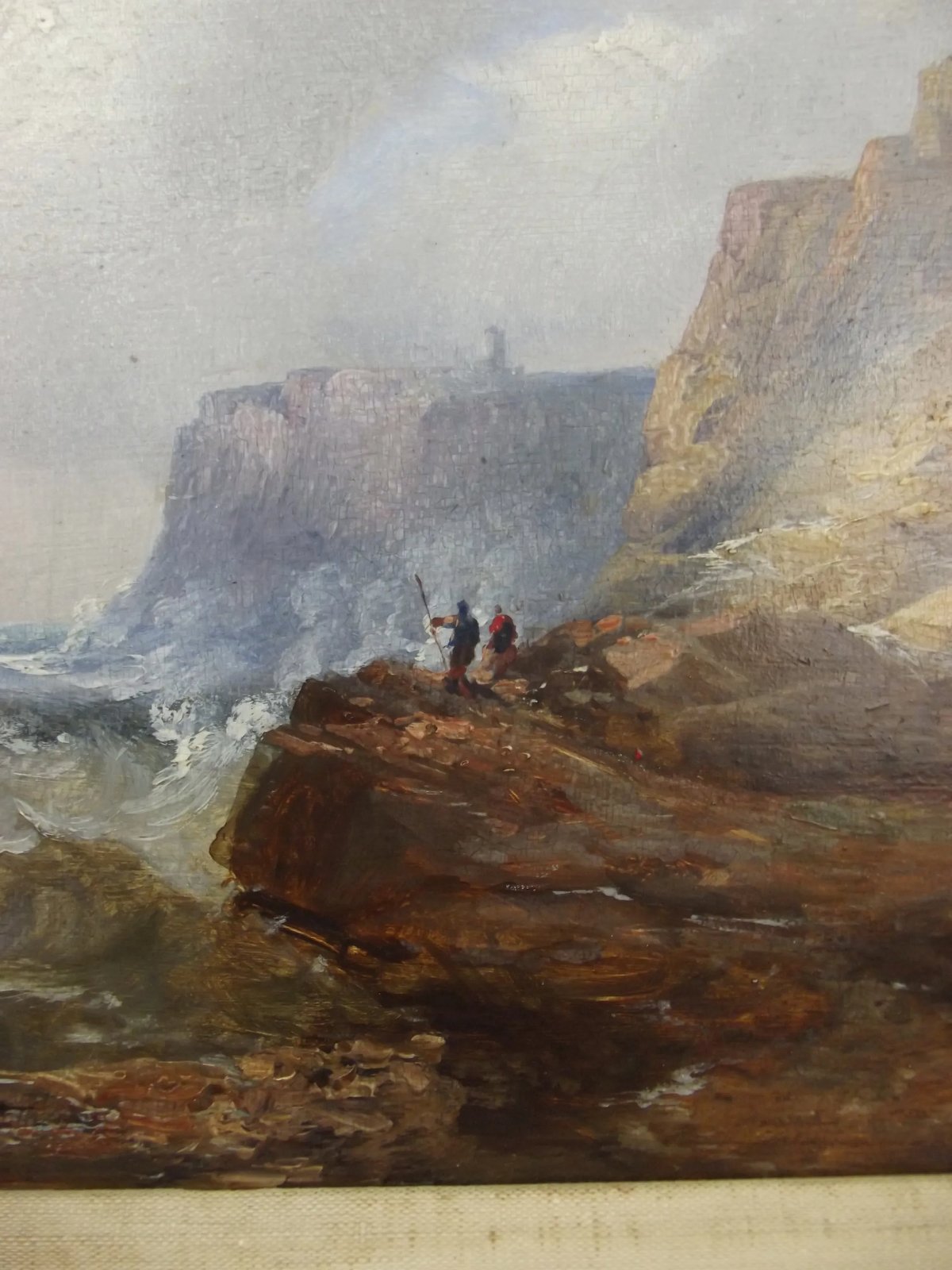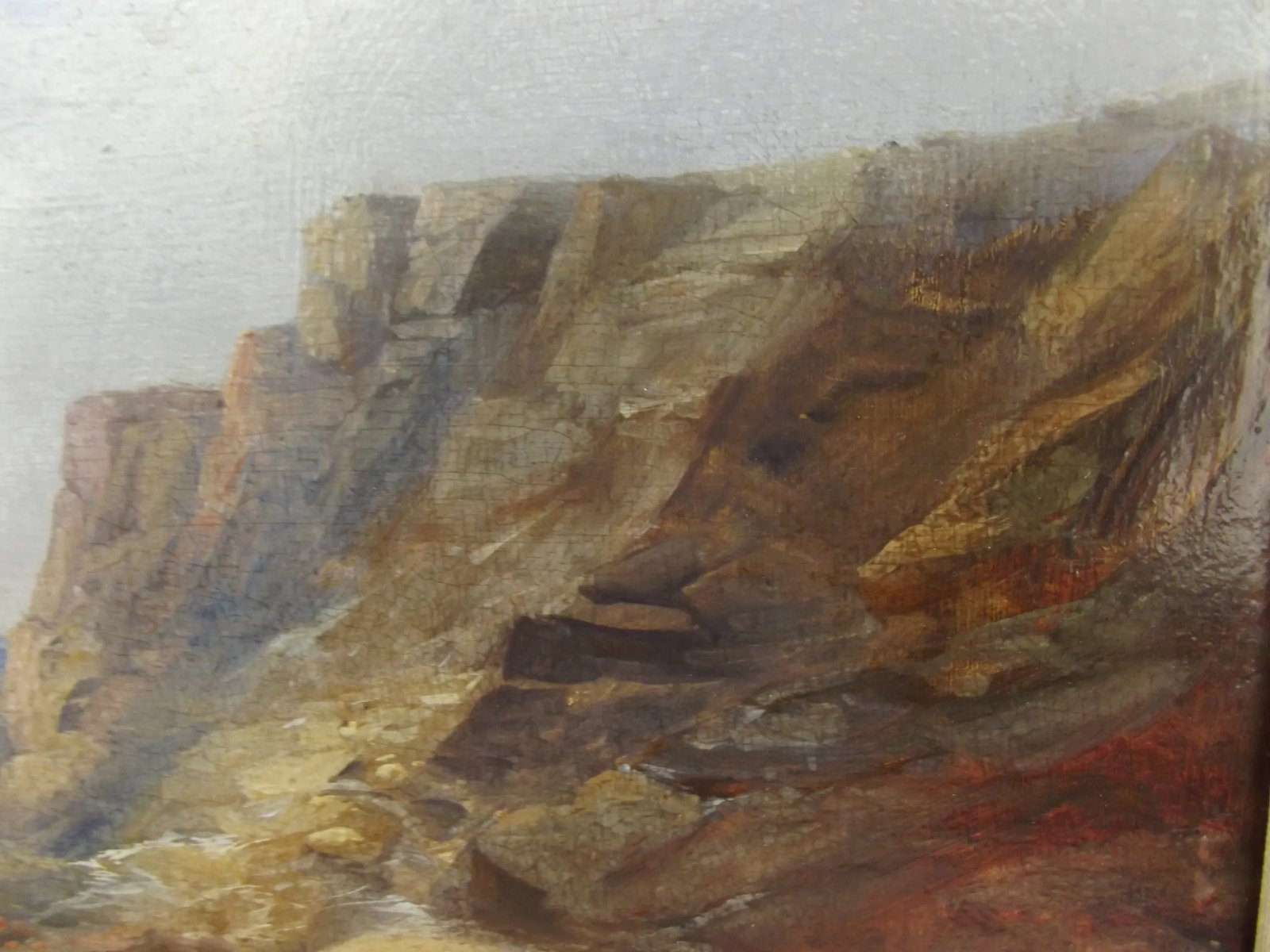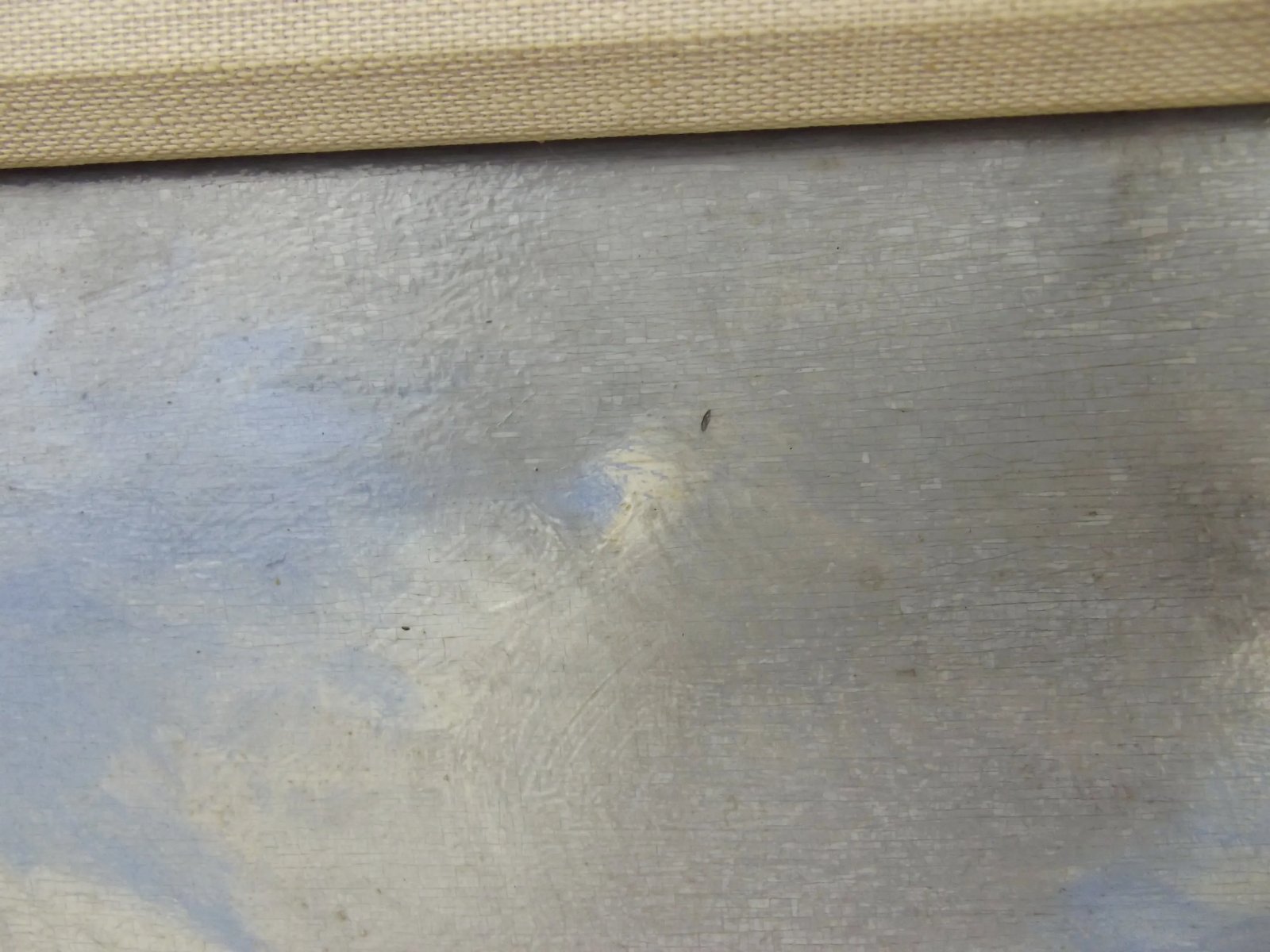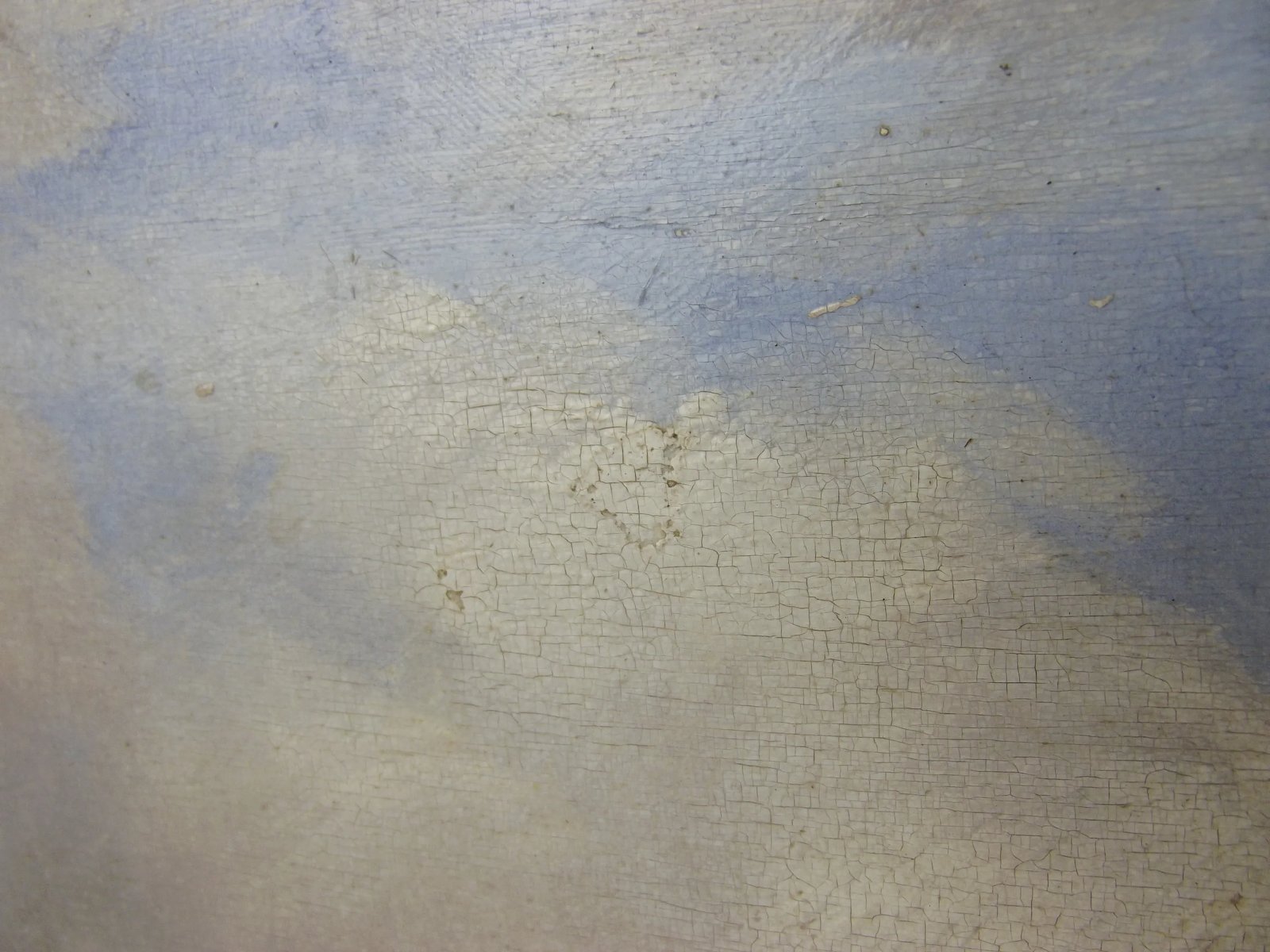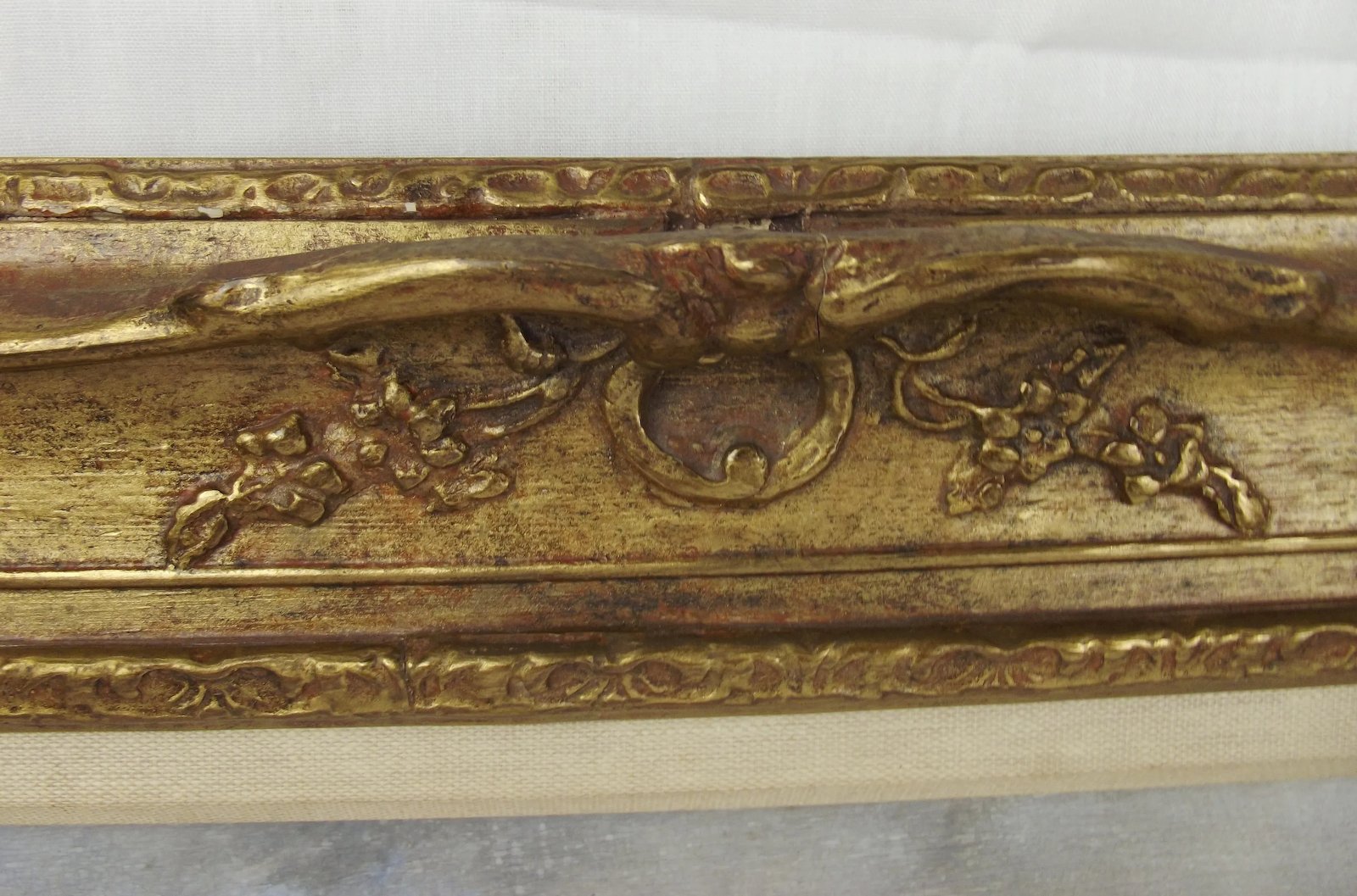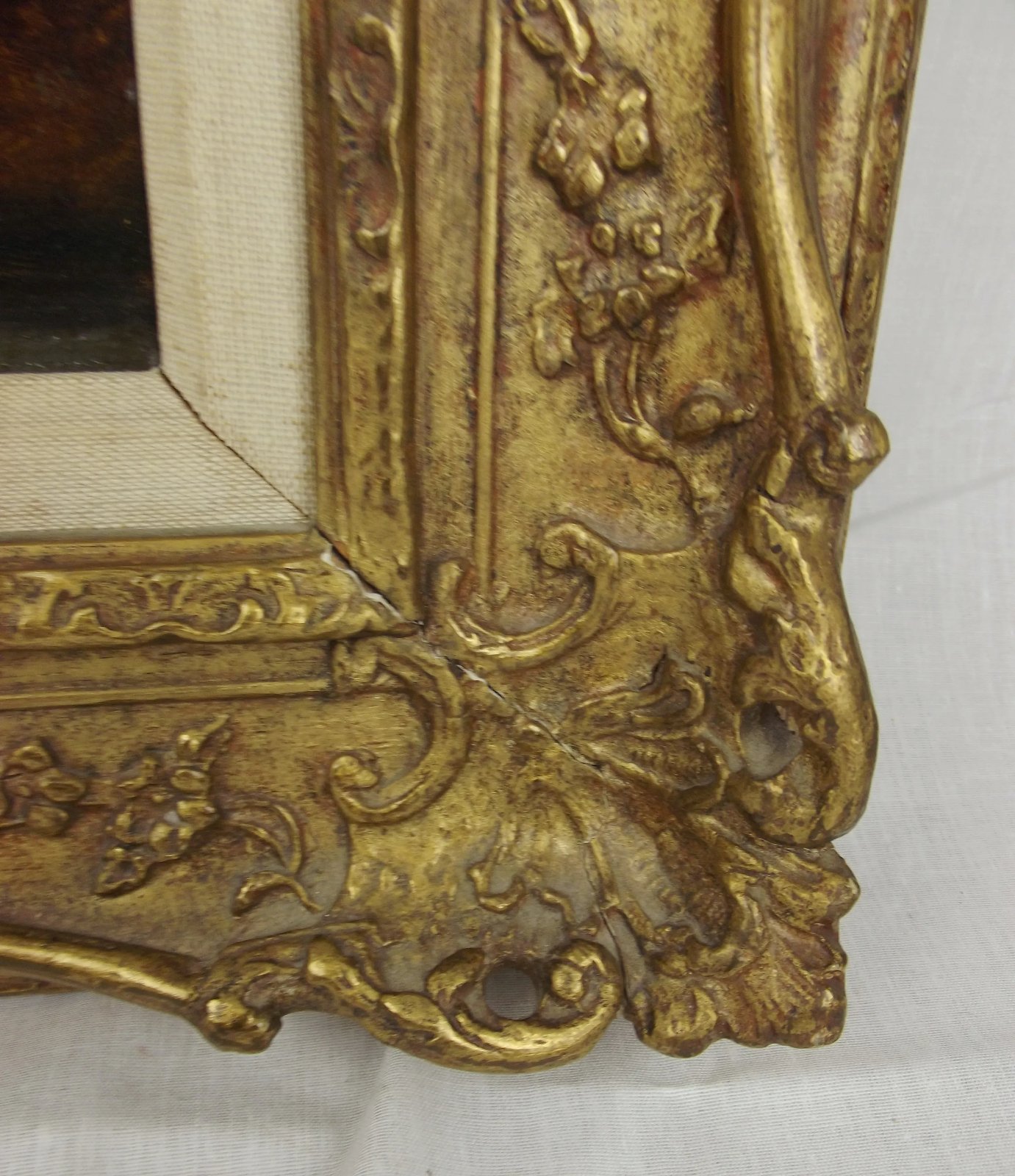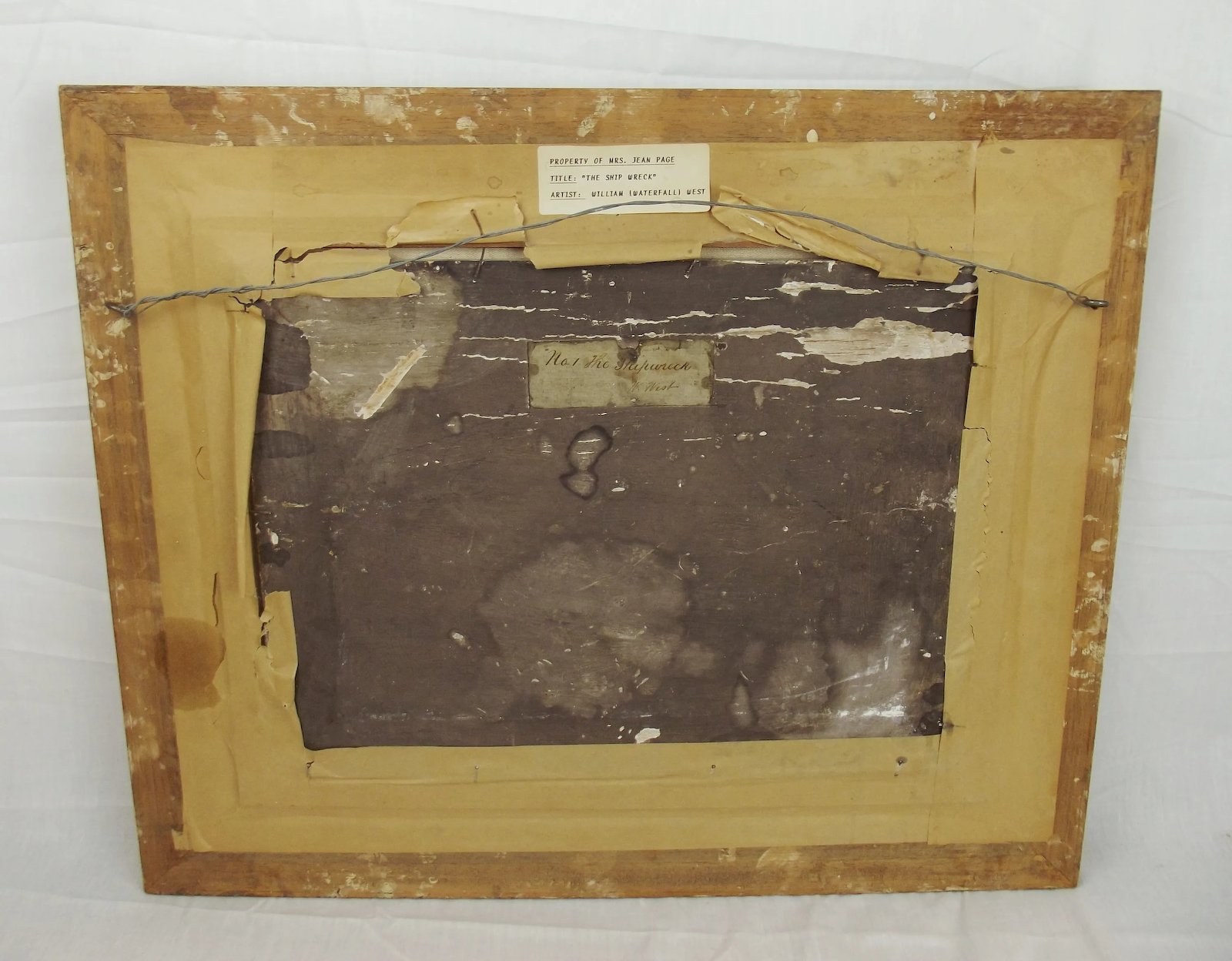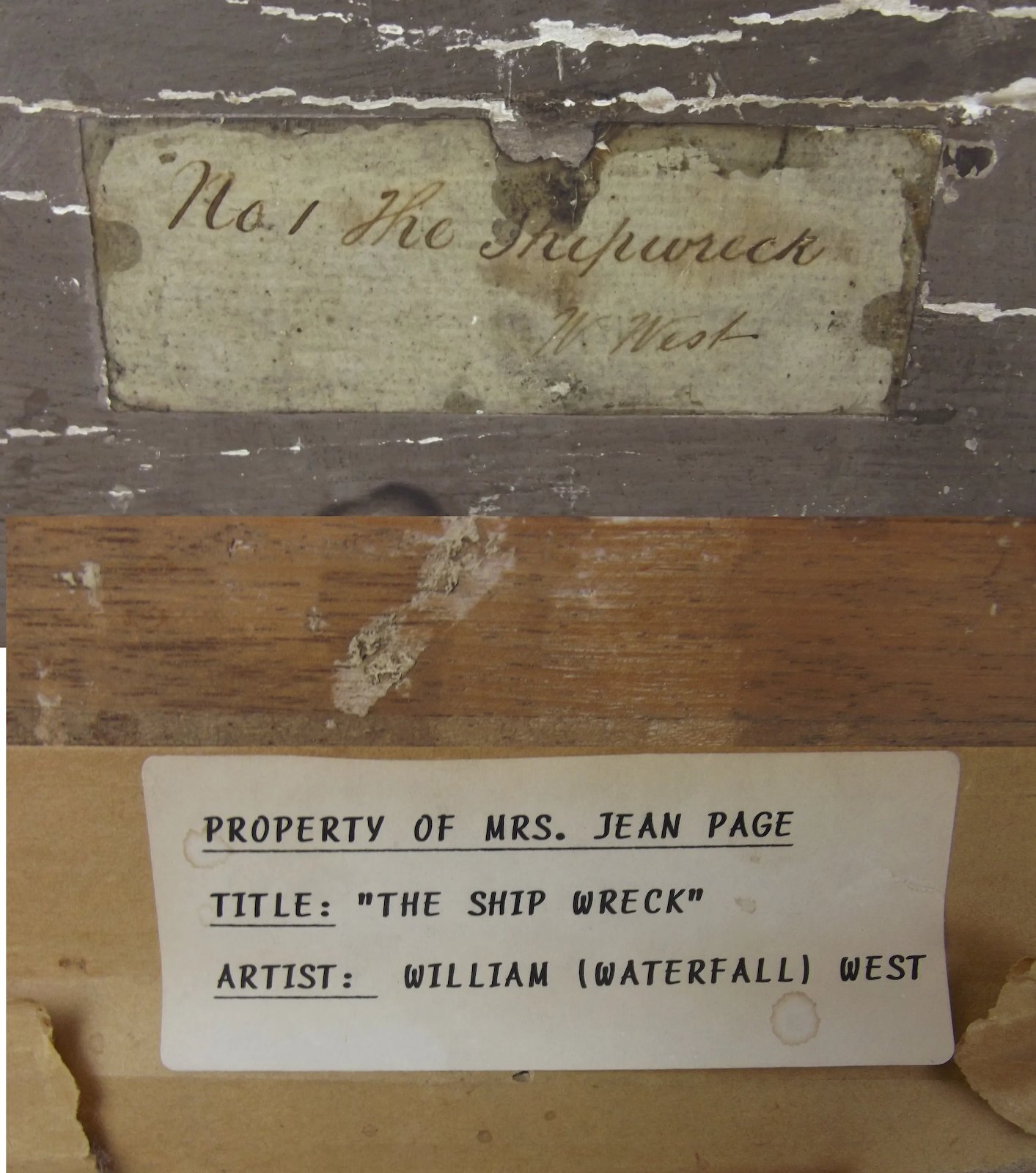~ Framed Oil On Canvas ‘The Shipwreck’ by William West (1801-1861) ~
A well executed oil on canvas painting titled ‘The Shipwreck’ by the English landscape painter William West (1801-1861).
The painting depicts a wrecked ship off the coast with two figures on the rocky foreshore.
The painting does not seem to be signed. There is however two labels to the reverse. One of similar age to the painting reading ‘No.1 The Shipwreck, W. West’ and a more modern label reading ‘Property of Mrs Jean Page’ with the title of the piece and artists name, naming him William (Waterfall) West, a nickname given due to his fondness for the subject.
The painting is presented in an ornate gilt frame of a similar age to the painting.
~ Dimensions ~
The painting measures 39cm (15 ½ inches) by 29cm (11 ½ inches).
The frame measures 57cm (22 ½ inches) by 48cm (18 ½ inches).
The piece weighs 2.5 Kg.
~ Condition ~
The paint has a little crazing In parts and there are one or two small marks to the image but overall the painting is in a very nice condition with no major problems.
The frame has wear commensurate with age with a couple of cracks to the plaster but is free from other damage.
~ William West ~
William West was an English landscape painter in oils and watercolours. He was a member of the Bristol School of Art and a member of the Society of British Artists.
West arrived in Bristol around 1823 and started exhibiting there. From 1824 he participated in the sketching activities of the Bristol School and during the same year exhibited at the Royal Academy and the British Institution.
From 1847 he concentrated on Norwegian subjects and became known as ‘Norway West’ or ‘Waterfall West’ because of his fondness for location and subject. Two of his works, On the High Road from Bergen to Christiana, Norway and At Naes, Norway, were exhibited at the Royal Academy in 1848.
As well as painting, West developed a great interest in optics and engineering. In 1828 he leased a disused windmill on Clifton Down in which he installed a large telescope in its tower to turn it into an observatory. In 1837 he opened a tunnel which he had excavated from the observatory down to St Vincent’s Cave on the cliff-face of the Avon Gorge.
#7583


